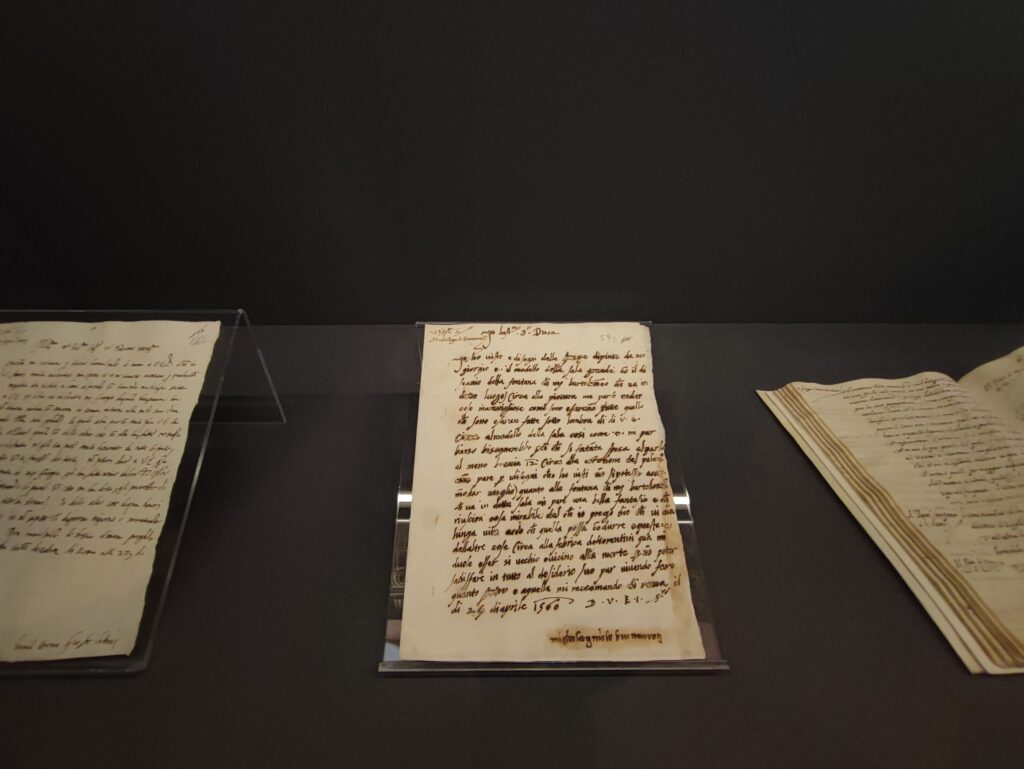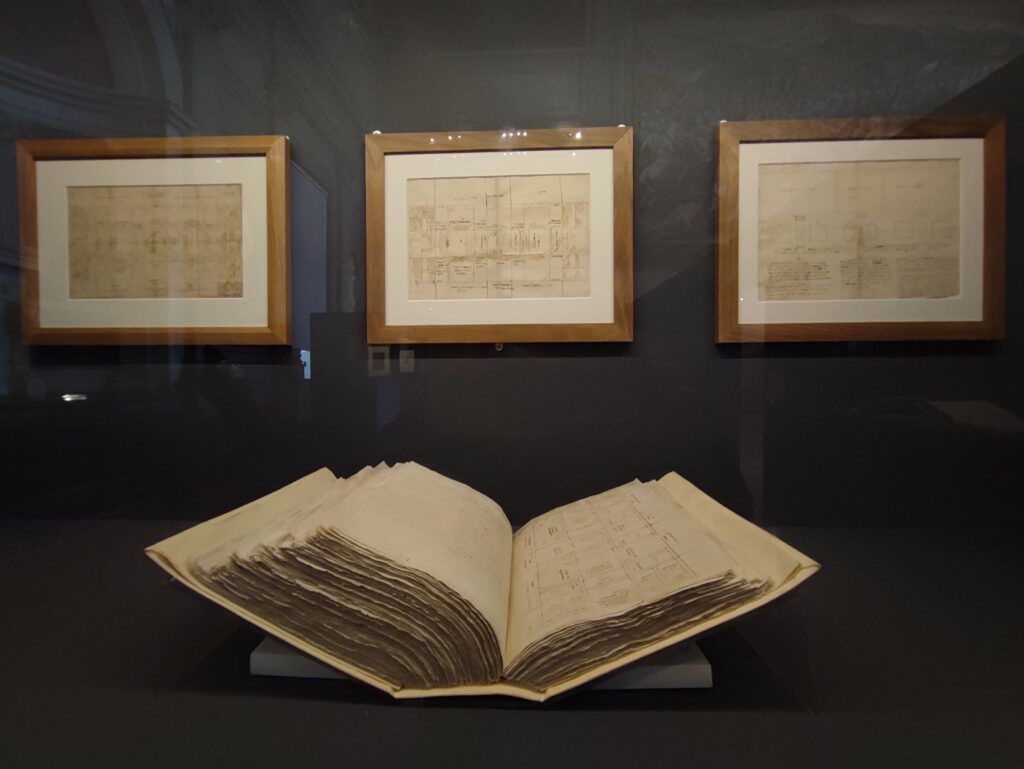In the majestic Palazzo Vecchio, a symbol of Florence’s history and culture, the Hall of the Five Hundred stands out as one of the most evocative exhibition spaces in the world. This extraordinary hall, designed by Giorgio Vasari to celebrate the glories of the Medici dynasty, periodically transforms into a unique setting for hosting high-profile exhibitions, where art, history, and innovation come together.
Currently, the Hall is hosting an exhibition dedicated to Giorgio Vasari on the occasion of the 450th anniversary of his death. The exhibition tells the story of the transformation of this space that took place in the second half of the 16th century, thanks to the genius and resourcefulness of the architect and painter from Arezzo, who served the Medici family. The exhibition is open until March 9, 2025—don’t miss it!

Visitors will have the chance to see original documents rarely displayed to the public, including several letters and drawings. Particularly intriguing is a letter from Michelangelo, in which the master suggests raising the hall by 12 braccia—a suggestion that Vasari would later bring to life.

Numerous drawings are on display, including those created in preparation for the frescoes depicting the Capture of Porta Camollia and the Battle of Marciano.

The Transformation of the Hall of the Five Hundred: Giorgio Vasari’s Intervention
The Hall of the Five Hundred, located within Florence’s Palazzo Vecchio, is an absolute masterpiece of Renaissance art and architecture. Originally constructed in 1494 during the government of Girolamo Savonarola to house the Great Council of the Florentine Republic, the hall underwent a radical transformation in the mid-16th century thanks to the intervention of Giorgio Vasari, commissioned by Cosimo I de’ Medici.
The Political and Artistic Vision of Cosimo I and Vasari’s Intervention: Architecture and Decoration
With the rise to power of Cosimo I, Palazzo Vecchio became the symbol of ducal authority and the heart of Medicean propaganda. The transformation of the Hall of the Five Hundred, once dedicated to republican politics, was part of a broader strategy to assert the role of the Medici dynasty as the legitimate rulers of Florence.
Cosimo commissioned Vasari to reshape the space, transforming it into a monument to the greatness of the Medici and the military glories of Florence. The aim was to erase the republican past and create an environment that celebrated the Medicean monarchy and its central role in Florentine history.
Vasari transformed the Hall into a work of extraordinary grandeur and artistic refinement. To enhance the monumental effect of the space, he raised the ceiling, introducing a complex system of beams and decorated panels. The new coffered ceiling, divided into 39 compartments, was painted with celebratory scenes from the life of Cosimo I and allegories of Medicean power, all enriched with golden details that bring brilliance and regal splendor to the space.
The walls were completely redecorated with gigantic frescoes depicting Florence’s great military victories, including:
- The Battle of Marciano, celebrating the defeat of Siena and the consolidation of Medicean rule.
- The Conquest of Pisa, symbolizing the city’s triumph over the proud Tuscan port.
These monumental frescoes, filled with dynamic figures and dramatic details, showcase Vasari’s technical and narrative skill, as well as his ability to merge art and politics into a single, cohesive visual narrative.
The Integration of Sculpture
In addition to the frescoes and the ceiling, Vasari enriched the Hall with a series of monumental sculptures, including the renowned Genius of Victory by Michelangelo, one of the few works predating Vasari’s transformation. The statues add depth and solemnity to the space, completing the celebratory message of the hall.
The Legacy of the Transformed Hall
Vasari’s transformation of the Hall of the Five Hundred represents a pivotal moment in the history of Palazzo Vecchio and the city of Florence. The project combined art, architecture, and political propaganda into a single space, transforming a symbol of the Republic into a celebration of the Medici’s absolute power.
Today, the Hall continues to captivate visitors from around the world, bearing witness to Cosimo I’s ambition and Giorgio Vasari’s creative genius, whose vision remains one of the highest examples of Italian Renaissance culture.
Replicas of the Jewels Created by Master Paolo Penko
The exhibition also features two precious jewels crafted by the renowned goldsmith Paolo Penko. These include the Chain and the Gold Medal, both given to Vasari by Pope Pius V. Vasari was honored with admission to the Order of the Golden Spur and the Knighthood of Saint Peter.
If you would like to visit Palazzo Vecchio and the exhibition in the Hall of the Five Hundred, contact me and I will provide you with all the details for the guided tour!
- Exhibition Hours: Every day from 9:00 AM to 7:00 PM, except Thursdays when it closes at 2:00 PM.
- Ticket Prices: €17.50, €15 for reduced tickets, free for children up to 18 years old.
